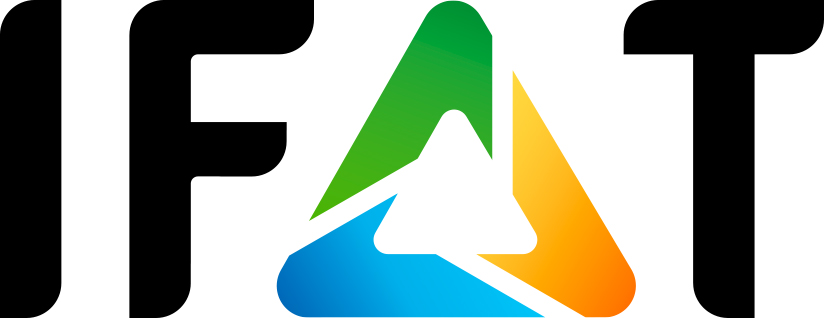IFAT Munich: production without discharging wastewater is possible
February 9, 2022
- Companies also challenged by water scarcity
- Zero Liquid Discharge already being practiced frequently
- Cost effective only under certain conditions
Water scarcity is one of the factors that will make industrial processes with minimal or even zero liquid discharge even more interesting in the future. The technologies required will be presented and market conditions discussed at IFAT Munich—the world's largest trade fair for environmental technologies—which will be held in Munich from May 30 to June 3, 2022.
For more than three decades, water consumption by German industry has been declining. While the mining and manufacturing industries took a total of around 5.8 billion cubic meters in 2016, the figure for 2019 was only 4.7 billion cubic meters. Continuing this trend in the future is both right and important, as even in some regions of Germany, which is generally rich in water, the “blue gold” can become a scarce commodity due to increasingly frequent periods of drought. “Given the increased conflicts of use that will emerge in the future, the industry has an own interest in thinking even more intensively about the proper use of water,” emphasizes Uli Paetzel. According to the president of the German Association for Water, Wastewater and Waste (DWA), companies could, for example, make even more consistent use of water-conserving technologies, rainwater or treated wastewater.
Technologically feasible for a long time
At least in theory, the maximum goal is to achieve production that is completely free of wastewater. Technology-wise, this is no longer a vision of the future. In 2016, for example, an Audi plant in San José Chiapa/Mexico, already went into operation claiming this achievement. According to the company, 100 percent of the wastewater produced is treated there and then used as process water, in production and for watering the green areas of the plant premises. New fields of application for Zero Liquid Discharge (ZLD) are constantly being developed, in addition to many other solutions already implemented in various industries. For example, a consortium including the Technical University of Dresden is currently working on the “Med-zeroSolvent” project funded by the German Federal Ministry of Education and Research to develop innovative, energy-efficient methods for a zero-effluent production of dialysis membranes, the production of which generates highly contaminated process water.
Water scarcity one of the drivers
“Economically, however, the installation of a ZLD solution is only worthwhile under certain conditions,” underlines Elmar Billenkamp, Head of Design & Sales at EnviroChemie GmbH. The company from Rossdorf/Germany is an internationally operating system provider for industrial water treatment and purification. According to the expert, water scarcity is one of the motivating forces for companies. “Where water is cheap and readily available, ZLD is generally not a factor. On the other hand, in regions where water is scarce, it can often be worthwhile to close the water cycle,” says Billenkamp. As an example, he cites a solar panel manufacturer in Qatar where saline wastewater is treated so that it can be reintroduced into the water cycle of production.
More independent from infrastructure and administration
Problems with the local sewer connection—whether due to official restrictions on discharge or because the corresponding infrastructure at the production site is inadequate or completely lacking—are another reason for costly in-house wastewater treatment. “ZLD is also an opportunity to become independent from administrative decisions. For example, an automotive manufacturer in its engine plant in Kazakhstan opted for a ZLD solution for its oily wastewater because it wanted to keep the costs of wastewater treatment under control,” reports Elmar Billenkamp.
In addition, there is a trend for especially large companies to increasingly set their own environmental targets, which they aim to achieve as part of sustainability strategies. In this context, ZLD can play an important role. “German automotive manufacturers are among the pioneers here, often imposing very strict requirements on the disposal volumes of their industrial wastewater,” describes Thomas Dotterweich, Senior Project Engineer Sales at H2O GmbH based in Steinen/Germany, which specializes in the treatment of industrial wastewater.
Wastewater concentrates can be economically attractive
Depending on the constituents of the treated wastewater stream, ZLD processes can also produce concentrated solids, sludges, and liquids that can not only be safely disposed of but may be used or marketed with an economic gain. “For example, in the case of salt bath hardening plants, it is possible to reincorporate the concentrate from a vacuum distillation plant into the production process, thus saving valuable raw materials,” describes Dotterweich. Another particularly economical concept was implemented by an automotive supplier in Mexico: the concentrates containing much oil resulting from the ZLD process can be burned to generate energy, so the company can even earn money by selling the concentrates.
Industrial water cycles—a central topic at IFAT Munich 2022
Water and sewage treatment are among IFAT Munich’s largest exhibition areas. The World's Leading Trade Fair for Water, Sewage, Waste and Raw Materials Management will take place at Munich’s exhibition center from May 30 to June 3, 2022. Not only at many company booths, but also in the extensive lecture and discussion program, the circulation of water in industrial production processes—to Zero Liquid Discharge— will be among the core topics.
Downloads
557484
Belonging images


- PR Manager

